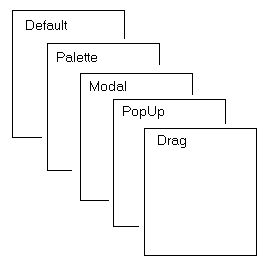

package jdbc; import java.sql.DriverManager; import java.util.Properties; import javax.servlet.ServletException; import javax.servlet.http.HttpServlet; import org.apache.commons.dbcp2.ConnectionFactory; import org.apache.commons.dbcp2.DriverManagerConnectionFactory; import org.apache.commons.dbcp2.PoolableConnection; import org.apache.commons.dbcp2.PoolableConnectionFactory; import org.apache.commons.dbcp2.PoolingDriver; import org.apache.commons.pool2.impl.GenericObjectPool; import org.apache.commons.pool2.impl.GenericObjectPoolConfig; public class DBCPInit extends HttpServlet { @Override public void init() throws ServletException { loadJDBCDriver(); initConnectionPool(); } private void loadJDBCDriver() { try { //커넥션 풀에서 사용할 jdbc 드라이버를 로딩 Class.forName("com.mysql.jdbc.Driver"); } catch (ClassNotFoundException ex) { throw new RuntimeException("fail to load JDBC Driver", ex); } } private void initConnectionPool() { try { String jdbcUrl = "jdbc:mysql://localhost:3306/chap14?" + "useUnicode=true&characterEncoding=utf8"; String username = "phs1116"; String pw = "1234"; //커넥션팩토리 생성. 커넥션 팩토리는 새로운 커넥션을 생성할때 사용한다. ConnectionFactory connFactory = new DriverManagerConnectionFactory(jdbcUrl, username, pw); //DBCP가 커넥션 풀에 커넥션을 보관할때 사용하는 PoolableConnectionFactory 생성 //실제로 내부적으로 커넥션을 담고있고 커넥션을 관리하는데 기능을 제공한다. ex)커넥션을 close하면 종료하지 않고 커넥션 풀에 반환 PoolableConnectionFactory poolableConnFactory = new PoolableConnectionFactory(connFactory, null); //커넥션이 유효한지 확인할때 사용하는 쿼리를 설정한다. poolableConnFactory.setValidationQuery("select 1"); //커넥션 풀의 설정 정보를 생성한다. GenericObjectPoolConfig poolConfig = new GenericObjectPoolConfig(); //유휴 커넥션 검사 주기 poolConfig.setTimeBetweenEvictionRunsMillis(1000L * 60L * 1L); //풀에 있는 커넥션이 유효한지 검사 유무 설정 poolConfig.setTestWhileIdle(true); //커넥션 최소갯수 설정 poolConfig.setMinIdle(4); //커넥션 최대 갯수 설정 poolConfig.setMaxTotal(50); //커넥션 풀 생성. 인자로는 위에서 생성한 PoolabeConnectionFactory와 GenericObjectPoolConfig를 사용한다. GenericObjectPool<PoolableConnection> connectionPool = new GenericObjectPool<>(poolableConnFactory, poolConfig); //PoolabeConnectionFactory에도 커넥션 풀을 연결 poolableConnFactory.setPool(connectionPool); //커넥션 풀을 제공하는 jdbc 드라이버를 등록. Class.forName("org.apache.commons.dbcp2.PoolingDriver"); PoolingDriver driver = (PoolingDriver) DriverManager.getDriver("jdbc:apache:commons:dbcp:"); //위에서 커넥션 풀 드라이버에 생성한 커넥션 풀을 등룍한다. 이름은 cp이다. driver.registerPool("cp", connectionPool); } catch (Exception e) { throw new RuntimeException(e); } } }
<servlet> <servlet-name>DBCPInit</servlet-name> <servlet-class>jdbc.DBCPInit</servlet-class> <load-on-startup>1</load-on-startup> </servlet>
3. 커넥션 사용
String jdbcDriver = "jdbc:apache:commons:dbcp:cp"; ... conn = DriverManager.getConnection(jdbcDriver);
커넥션을 사용할땐 기존 db 주소가 아닌 커넥션 풀의 주소를 사용한다.
'JAVA > JSP,Servlet' 카테고리의 다른 글
| JSP 모델1과 모델2, 그리고 MVC 패턴 (2) | 2016.02.15 |
|---|

